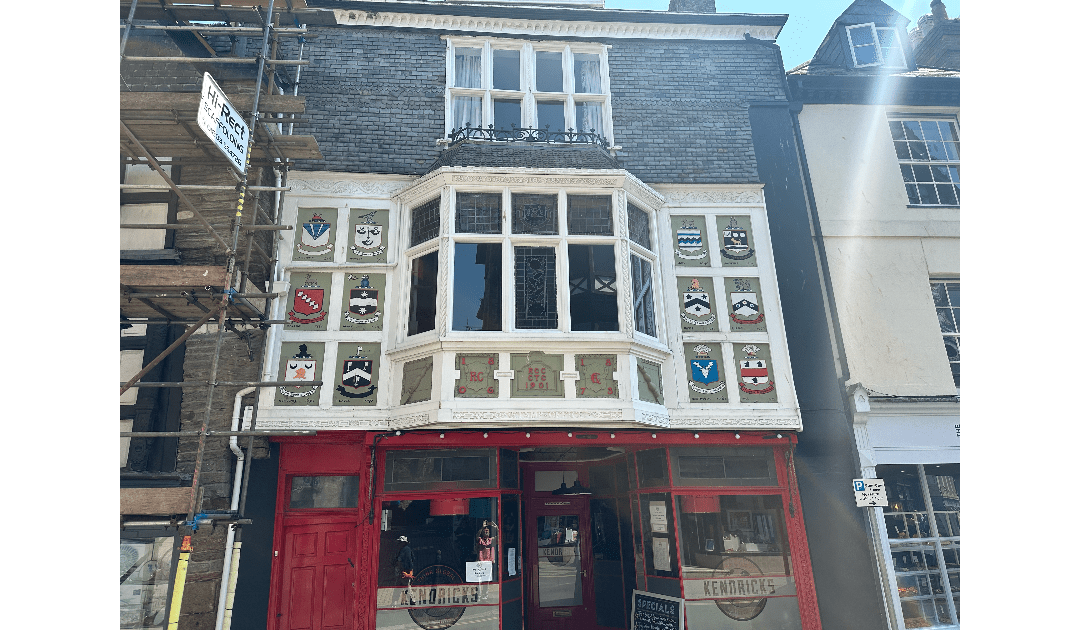Family crests on a facade in Dartmouth inspired today’s post. Although I have written about Sir Anthony Standen, The Spy who Sank the Armada, I have not posted very much about the armada. Of course there were three Spanish Armadas, 1588, 1596, and 1597. The armada of 1588 is the most well known, and the one I will deal with here.
The names on the crests that played a part in the Spanish Armada are: Hawkins, Drake, Raleigh, and Gilbert. Sir John Hawkins was Vice-Admiral to Lord High Admiral Charles Howard. Although Howard was a hero in the defence of England against the Spanish Armada, sadly he was also an early promoter of England’s role in the Atlantic slave trade.
Sir Francis Drake was also Vice-Admiral to Lord Howard, and a fellow slave trader alongside Hawkins. Drake is also known for the first successful English circumnavigation of the globe, from 1577 to 1580.
I have posted about Sir Walter Raleigh in his role as a writer. His role in the defeat of the Spanish Armada was in having commissioned and paid for a ship to be built, Ark Raleigh. This ship was purchased by Queen Elizabeth and renamed Ark Royal. It was Lord Admiral Howard’s flagship. Raleigh also played a role in organising shore defences in Devon.
Sir John Gilbert also organised the defence of Devon against the expected Spanish Armada. His brother, Humphrey Gilbert, claimed Newfoundland for Queen Elizabeth in 1583.
There are several factors that led to the defeat of the Spanish Armada. The English ships were more manoeuvrable than the Spanish galleons. England’s commanders had home advantage in their knowledge of their coast. They lured some of the Spanish ships into the Portland Race. The race is a notorious ship graveyard. King Phillip had issued rigid orders, and without the ability to react to events, the armada’s commander, the Duke of Medina Sidonia, was at a fatal disadvantage.
Ultimately the fire ship attack on the Spanish fleet at anchor off Calais, and the stormy weather which followed, defeated the armada. But the intelligence provided to Francis Walsingham by Sir Anthony Standen was unquestionably an important factor.

